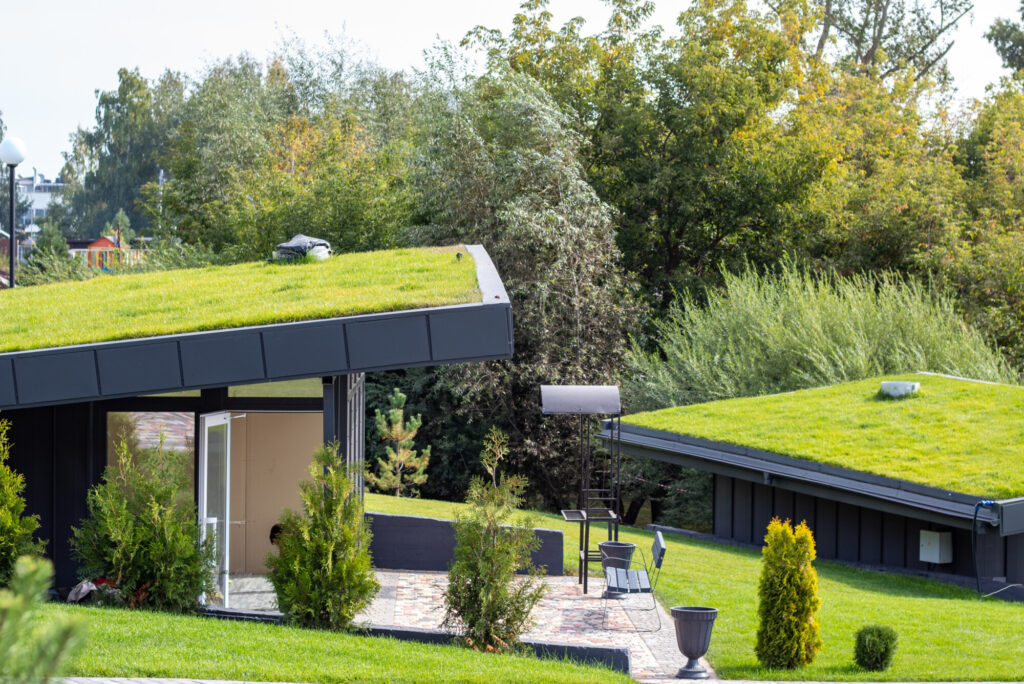Over thirteen yearsexperience in the industry
We can offer aMarket comparison
Accepted bymajority of high street banks
Recognised byUK Finance
Climate Change – the Impact on Housing and Construction
With the impacts of Climate Change becoming more and more apparent, the UK construction industry is evolving to keep up to pace with the changes required to contribute toward a more sustainable industry.
 By the end of the 21st century, all areas of the UK are predicted to be warmer (1), with UK Summers seeing the greatest rise in temperatures, and the winters seeing a 30% increase in rain. Nearly 5.2 million properties are at risk of being flooded every year (2), equating to 1 in 6 properties. By 2050, this number could double.
By the end of the 21st century, all areas of the UK are predicted to be warmer (1), with UK Summers seeing the greatest rise in temperatures, and the winters seeing a 30% increase in rain. Nearly 5.2 million properties are at risk of being flooded every year (2), equating to 1 in 6 properties. By 2050, this number could double.
The built environment contributes to 25% of the UK’s total greenhouse gas emissions annually, with this in mind the UK government has started to examine the ways in which emissions can be reduced whilst still reaching the 300,000 homes target annually.
Here at Granite, we have been looking into some ways developers can ensure properties are attempting to reach the Net Zero Carbon target.
What is a Net Zero Carbon property/build?
In principle, a Zero Carbon house produces zero or negative CO2 emissions. They aim to maximise energy efficiency and maintain renewable energy. It is important to note that location plays a big part in suitability for generating and accommodating renewable energy.
Advantages
- Greater demand for energy-efficient properties (3) – with profits averaging 20% more than for an existing property
- Lower carbon footprint
- Reduction in waste
- Reduction in greenhouse gas emissions
- Savings over time
Disadvantages
- High initial cost of sustainable build/heating
- Energy Supply may differentiate depending on the weather conditions
- Funding from lenders may be difficult due to the relative newness of methods/technology
- Construction methods can be complex and specialist builders may be required
Air Source Heat Pumps
- Air source heat pumps absorb heat pumps from the outside air into a liquid refrigerant at a low temperature. By using electricity the pump compresses the liquid to release its stored heat. The Heat is then sent to your radiators or underfloor heating. This can then be stored in the hot water cylinder.
- According to Savills latest report, in 2021 the UK installed 1.48 heat pumps per 1,000 households, however, countries such as Norway installed 49.77 heat pumps per 1,000. Despite the increased cost of a Heat Pump, compared to a Gas boiler they are 300-400% more efficient per Kilowatt of Electricity. It is also possible to run your ASHP using Solar panels
- A typical ASHP costs between £7,000 to £13,000 but some families are eligible for a £5,000 grant.
Ground Source Heat Pump
Ground source heat pumps work by transferring heat from the ground outside your home to heat your radiators, underfloor heating, and hot water. Here’s how they operate:
- Heat Absorption: A mixture of water and antifreeze circulates through a loop of pipe buried in your garden or outdoor space, absorbing heat from the ground.
- Heat Transfer: The fluid passes through a heat exchanger into the heat pump, raising its temperature.
- Heat Conversion: The heat is then transferred to water for heating purposes.
- Refrigeration Process: The fluid continues its circuit back to the submerged pipework to repeat the cycle.
- Typical Costs: Basic pump from £2,000 to £15,000. Installation from £16,000 to £45,000
Passivhaus Builds
- Passivhaus houses are based on the concept of providing brilliant indoor air quality and temperature using very little energy for heating/cooling.
- They aim to maintain a constant temperature by retaining heat from the sun
- They often have triple-glazed windows, Mechanical ventilation with heat recovery system attached
- The Average cost of a Passivhaus is 5-10% more than a conventional build (4), however, due to the high standard of build, fewer repairs and replacements are required, leading to fewer callbacks for developers.
- Passivhaus tend to value 7% higher than standard builds,
Solar Panels
- The Average cost of Solar panels is around £6,500 for a 4kwp system, with the batteries for storing the electricity, costing anywhere between £1,200 to £6,000.
- An average 4kwp can save up to 675kg of Carbon emissions annually (7)
- The Payback time for Solar Panels by January 2023’s rates, will be 3.75 years.
- Solar panels are considered ‘Permitted developments’ and often do not require planning permission.
- The Average system will require 25m2 of roof
Bamboo
- Bamboo is a very sustainable alternative to Timber, and researchers argue stronger than Steel (9).
- Bamboo can grow in areas where no other plants can and grows much faster than Timber.
- Most Bamboo species can survive UK winters, with no additional care required.
- Bamboo tends to be more cost-effective than traditional materials
What is the government doing to push developers towards Net Zero Carbon?
In June 2022, the government implemented changes to the Building Regulations (5) in favour of building Net Zero Carbon properties, the changes are as follows;
- All new homes must produce 31% less carbon emissions.
- New non-domestic builds will need to produce at least 27% less carbon emissions
- New metric for measuring energy efficiency
- New minimum efficiency standards have been provided
- New and replacement heating systems in both domestic and non-domestic builds must have a maximum flow temperature of 55 Degrees.
- Existing non-domestic buildings must improve the efficiency of heating and hot water boiler systems.
- Background trickle vents have been recommended for non-domestic buildings along with a new requirement for CO2 monitors in all offices.
The Green Deal
The Green Deal (6) is a scheme set up by the UK government to enable homeowners to benefit from energy-saving improvements. Any Household within England, Scotland or Wales with an electricity meter can benefit from the scheme.
An assessment of energy usage within your home will be undertaken by a Green Deal Assessor (8) and will evaluate how you could benefit from the improvements. This could include;
- Replacing windows and doors
- Draught proofing
- Wind power or solar panels
- Insulation
- Upgrade to lighting
- Double glazing
A loan is granted by a chosen provider and is paid back through a charge added to your electricity bill. The Green Deal stays with the property so if you move you no longer make repayments. The Annual repayments on the loan shouldn’t be more than the savings you would make from benefitting from the improvements.
With this in mind, the Construction sector is becoming more aware of the need for change. It appears the Government are clearly aware of the severity of Climate Change, offering continuing support to the Construction Industry.
For further information please contact Ed, Kelly & Rob on Tel: 01284 365345 or email ed@granitebw.co.uk / kelly@granitebw.co.uk/ rob@granitebw.co.uk
References
Copyright © 2025 Granite Building Warranties
Supported by Fox 360 Ltd
Granite Building Warranties Ltd is an Appointed Representative of Richdale Brokers & Financial Services Ltd which is authorised and regulated by the Financial Conduct Authority.
Granite Building Warranties is a company registered in England and Wales (Company Number 11497543) with its registered office at 1st Floor, 5 Century Court, Tolpits Lane, Watford, WD18 9PX
